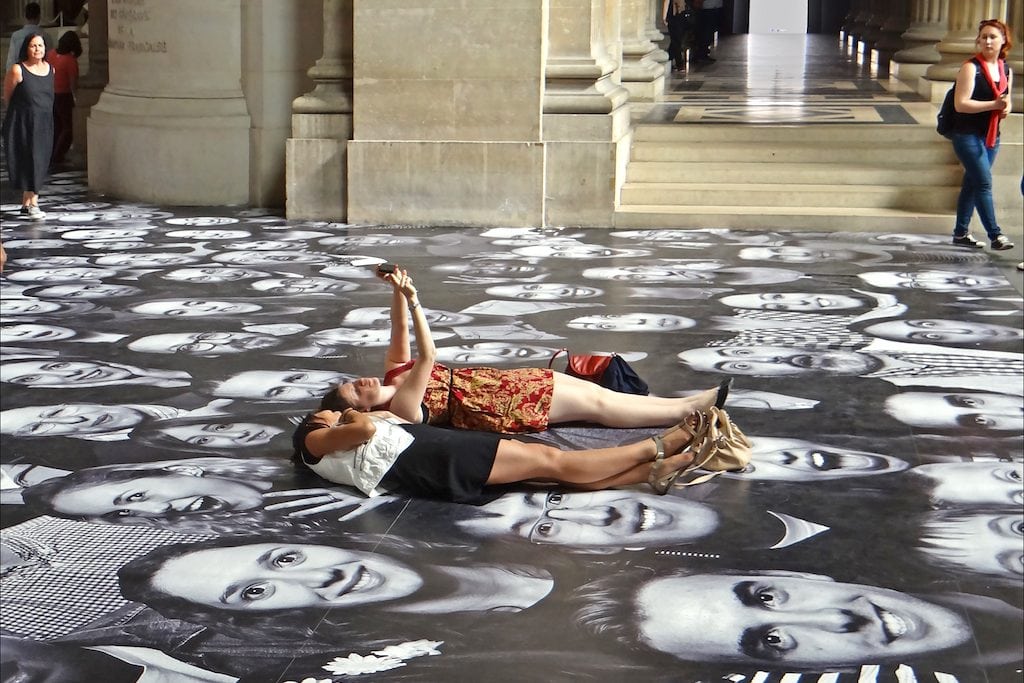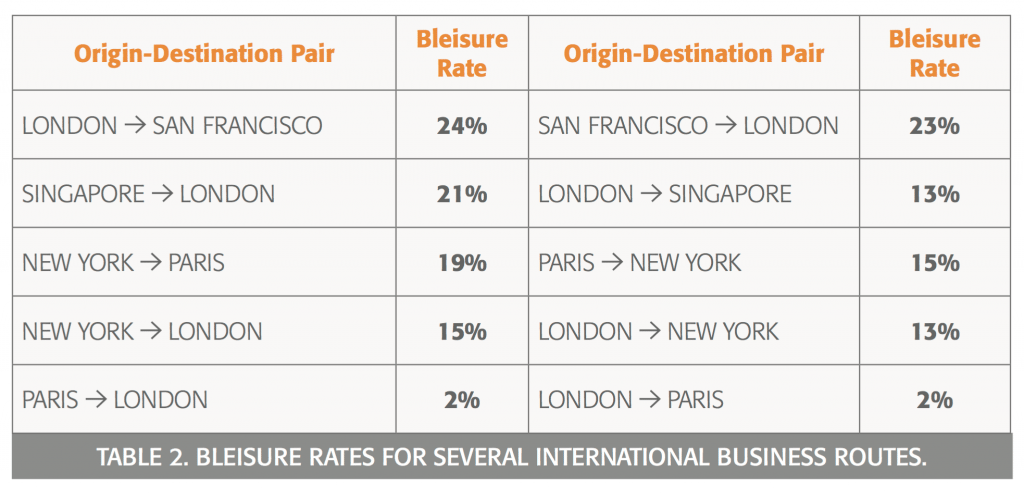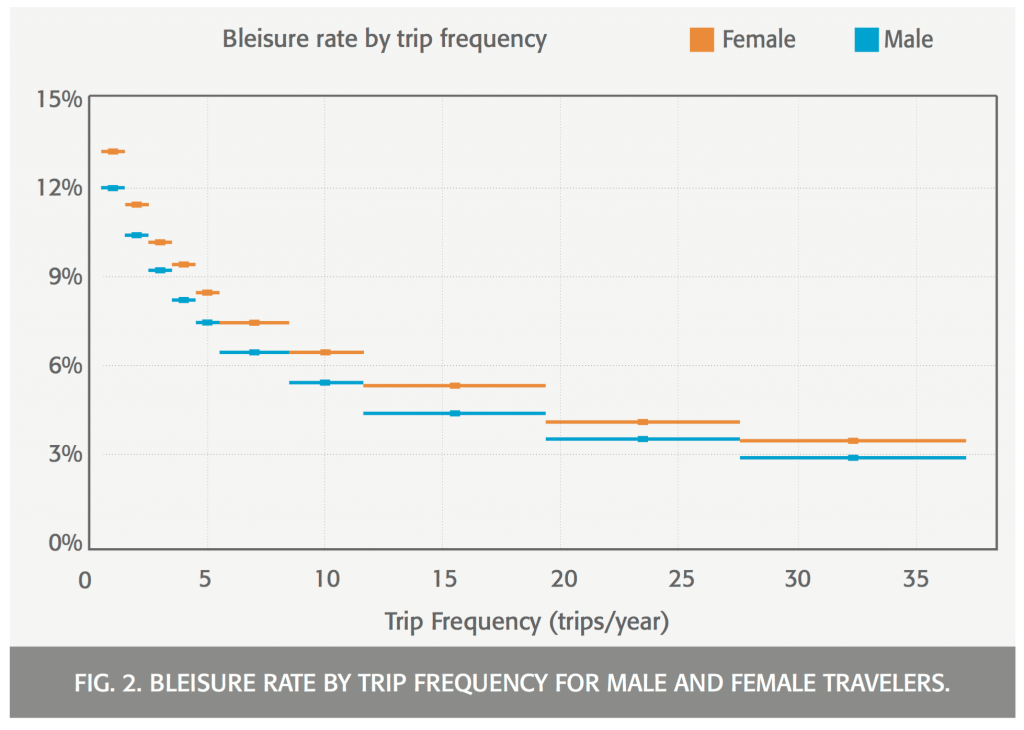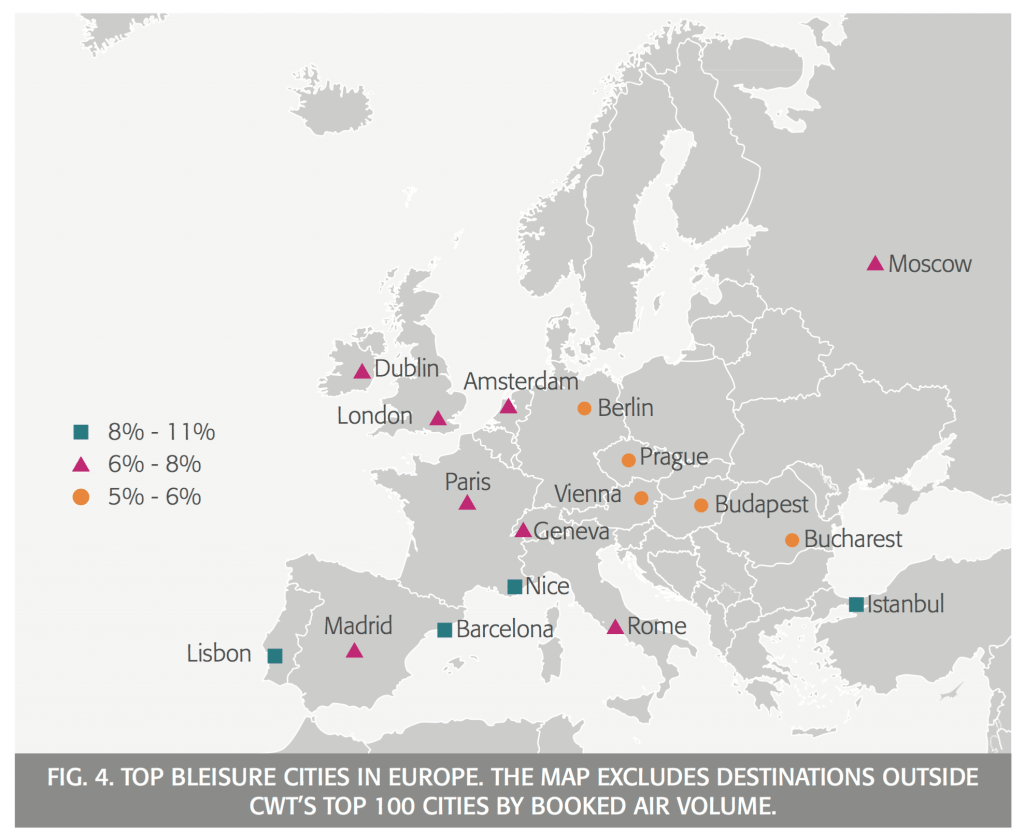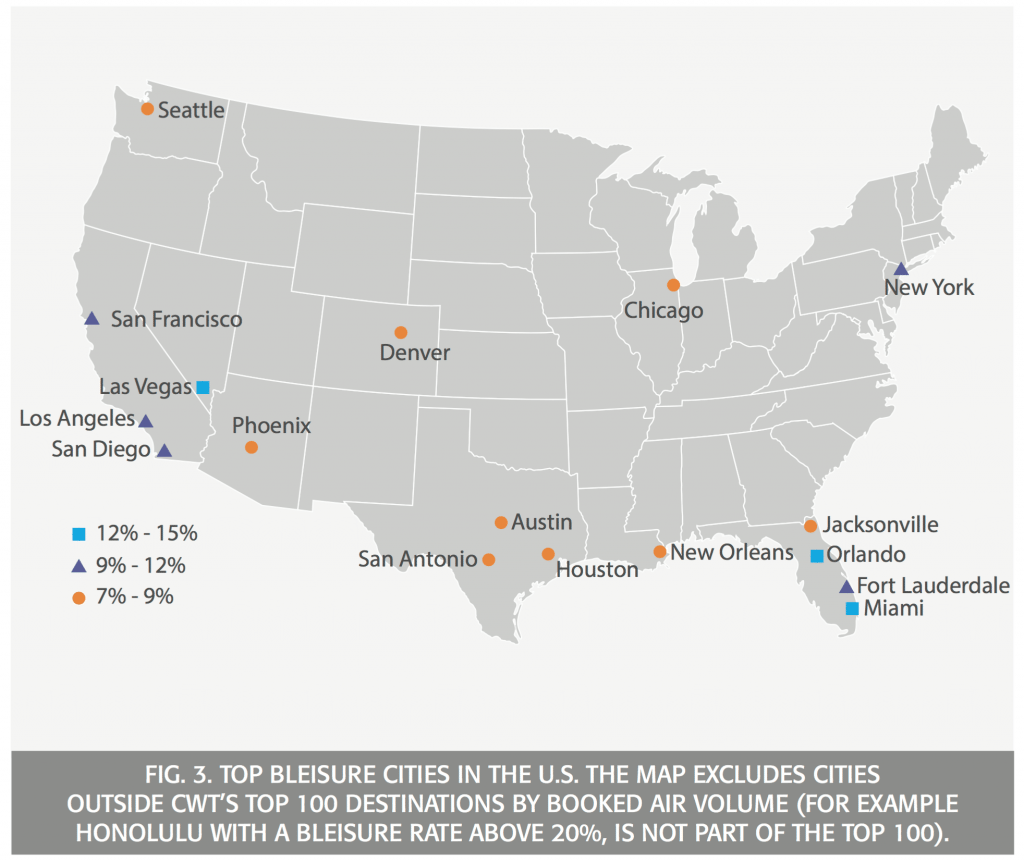Skift Take
It makes sense that business travelers who don't travel very much would try to include some leisure elements when they do hit the road.
The phenomenon of business travelers who tack on additional leisure travel days to their business trip — the “bleisure” traveler — has been cited as an emerging trend for years.
But a new white paper, “A Quantitative Look at the Leisure Phenomenon,” by Carlson Wagonlit Travel’s CWT Solutions Group, found that the percentage of business travel trips that are also bleisure trips has remained static over the last five years, calling the overall trend into question.
Who exactly are the travelers most likely to combine work and tourism? And where are they most likely to travel?
A study of five years’ worth of data by CWT Solutions Group shows that female travelers who rarely travel for work are the most likely to add a leisure trip when they do hit the road for work.
Travelers between the ages of 20 and 25 are the most likely to add a leisure component to their business trip, the study found.
“Our definition of bleisure requires a Saturday night stay at destination either at the beginning or at the end of a trip, or both,” reads the report’s executive summary. “Using this definition, we find that every year 20 percent of business travelers take bleisure trips, and these account for 7 percent of all business trips. These values have remained largely unchanged since 2011, which indicates that this is not a new phenomenon.”
The report defines a bleisure trip as business trip which has an arrival flight on Saturday or a flight departure on Sunday; in other words, a business trip that begins or concludes on the weekend. The report provides a caveat about the difficulties of providing definitive answers about the trend using this methodology, stating that it is nearly impossible to determine the true scope of bleisure travel using this definition.
The data show that almost half of those who combine business travel with leisure take personal days at the end of their trip.
“Our analysis shows that for 46 percent of the bleisure trips the personal days occur at the end of the trip, for 34 percent at the beginning, while for the remaining 20 percent leisure occurs at both ends of the trip,” the report continues.
Here are four charts from the report that shine more light on the phenomenon of the bleisure traveler.
Top international bleisure destinations may surprise you
Business travelers visiting San Francisco and London have the highest rates of bleisure travel among international business travelers. The closer the travel destination, however, the lower the bleisure travel rate.
Women are more likely than men to take a bleisure trip
There appears to be an inverse relationship between the amount of business trips a person takes and his or her likelihood to go on a bleisure trip. Women are more likely than men to combine business and leisure regardless of how much they travel.
Spain, France, and Turkey lead Europe in bleisure
Europe’s top tourist destinations like Rome aren’t the top bleisure travel destinations. Instead, Spain, Portugal, and Istanbul attract the most business travelers looking to enjoy the destinations.
Miami, Orlando, and Las Vegas are the top U.S. bleisure destinations
Unlike Europe, the top U.S. bleisure destinations are the country’s top leisure destinations. Florida’s top attractions and Las Vegas dominate, followed up cities in California and New York.
The Daily Newsletter
Our daily coverage of the global travel industry. Written by editors and analysts from across Skift’s brands.
Have a confidential tip for Skift? Get in touch
Tags: bleisure, business travel, carlson wagonlit
Photo credit: More young and infrequent business travelers take the most bleisure trips. Pictured, at the Pantheon in Paris, people in engage in artist JR's participatory exhibit. Jean-Pierre Dalbéra / Flickr
